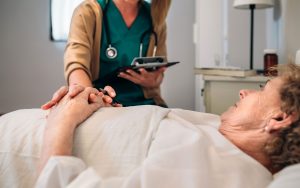The persons who had a stroke and transient ischemic attack (TIA) are generally under the risk of a second stroke which is more severe and crippling and repetitive. To prevent the second stroke, a rapid diagnosis, treatment and definition of the underlying reasons urgently are needed. Nevertheless, the repetitive strokes compose 25-30 % of all the stroke cases despite the treatments. This situation implies the failure of preventing a second stroke. Applying the effective and suitable strategies of preventing a second stroke immediately and effectively has a potential of decreasing the risk of having a stroke by a quarter.
Does Stroke Repeat Itself?
The risk of having a second stroke after a stroke or transient ischemic attack (TIA) increases approximately as 1% within the first six hours, 2.2% in 12 hours, 3% on the 2nd day, 5% on the 7th day and 10% in the 10th hour. Therefore, stroke or TIA is a medically urgent situation which necessitates immediate diagnosis and treatment.
While the repetitive stroke risk in the persons survived after acute stroke is 11,1 % in a year, this rate has been stated as 26,4% within 5 years and 39.2% in 10 years. The repetitive ischemic stroke risk within 20 years has been stated as approximately 19% for young adults who had a stroke between the ages of 18-50. Among the factors precursing a second repetitive stroke in the long run are:
- Common vascular risk factors (old age, hypertension, diabetes or smoking)
- Previous symptomatic vascular disease (stroke, myocardial infarction or peripheral arterial disease),
- Unstable vascular disease,
- Embolic sources and causes (atrial fibrillation or ischemic stroke caused by embolism from heart or main arteries)
Strategies to Prevent a Second Stroke
The patients who are under the suspicion of transient ischemic attack (TIA) should be evaluated immediately. The effective strategies to prevent a second stroke consist of evaluation and management at the acute special branch and immediate treatment.

Anticoagulation Treatment
One of the effective strategies to prevent the second stroke is the usage of anticoagulation treatment given by doctors to the patients who had a ischemic stroke or a transient ischemic attack with arterial origin regularly.
Blood Pressure Control
In all the stroke patients, it is recommended to decrease blood pressure step by step. The ideal time to start the blood pressure after stroke is not clear but it should be started before the discharge from the hospital. It is needed to use the medications which help in blood regulation, have regular blood pressure checkups and make some alterations in lifestyle to support blood pressure control.
Cholesterol Control
To prevent a second stroke and reduce the risk of it, concentration of the low-density lipoprotein, that is, LDL cholesterol, should be decreased in the patients who had ischemic stroke or transient ischemic attack caused by atherosclerosis through diet, alteration in lifestyle and medication.
Smoking and Alcohol Consumption
The patients who had a stroke or transient ischemic attack should quit smoking and stop having alcohol as soon as possible to prevent a second stroke. Regarding this, patients may think of a combination of medication and behavioral treatment by consulting their doctor.
Physical Activity
Routine daily life activities should be supported with medium level physical exercises (like brisk walking) of 30-60 minutes for 4-7 days a week and other dynamic exercises. High-risk patients (the ones with cardiac diseases etc.) should participate into the exercise programs supervised by a physiotherapist medically.
Healthy and Balanced Nutrition
Another recommendation to assist the prevention of a second stroke is adhering to a diet with low level of saturated fat, cholesterol and sodium and based on fresh fruit, vegetables, low fat dairy products, soluble fibrous foods, wholegrain and sourced by protein from herbal sources. Besides, increasing the daily water consumption and limiting coffee, tea consumption are among other measures to be taken.

